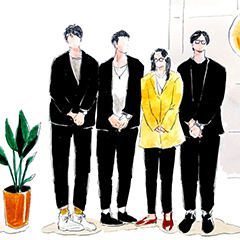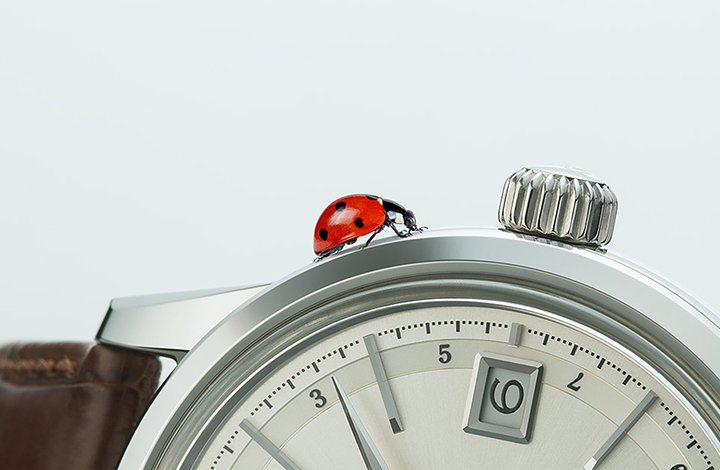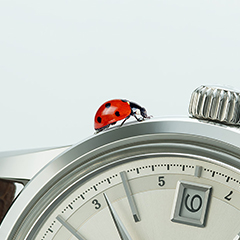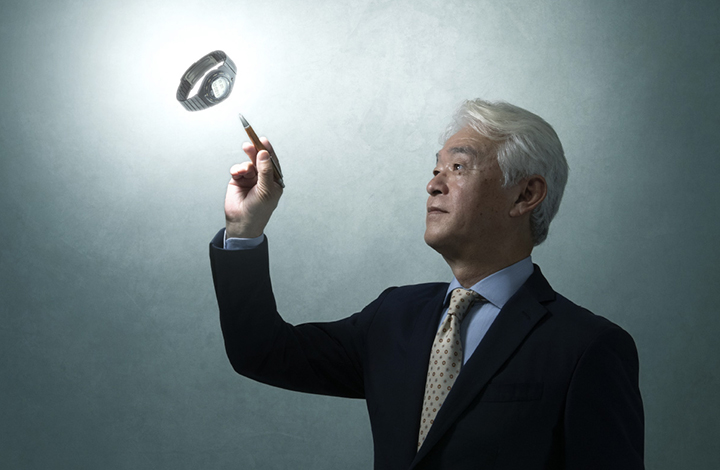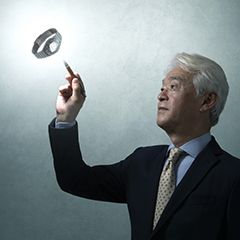The awareness brought about by conversations with the artists.
Koriyama: While spending time with the members of we+ who created the exhibits, we talked about their creations and asked them questions. Through these conversations, there were so many things that I came to realize and think “Oh, so that’s how it is.”
Yoshida: I said earlier that it was like we surrendered ourselves to the grandeur of outer space, and I heard from the we+ members that this was exactly what they were aiming for. They heard the concept of likening the Spring Drive mechanism to a microcosmos, and they expanded their ideas from that concept. The slow movement of light in the darkness and the glass objects formed with gently-curving lines produce a symbolic image of a microcosmos.
Koriyama: For my part, I was curious about how we+ came to create this exhibit based on the theme of “the continuous, natural flow of time,” presented by Grand Seiko, so I asked them some questions on that point. They said they first spent a lot of time discussing what the nature of time was, and finally concluded that time is not just about precision, but also the transitory and fleeting nature felt by each individual.
Yoshida: Time flies when we are having fun or focused on something, but sometimes we feel time goes by slowly. They suggested to us that one of the aspects of time is that it is elastic depending on people’s circumstances and environments.
Koriyama: In order to express these characteristics, they said that from the very start they wanted to use a luminescent substance that would gradually change its brightness. They thought of various types of approaches before incorporating the elements of the installation, and after repeated experiments finally reached the desired expression using a liquid. I actually visited their laboratory in Japan, where they were developing materials and devices from scratch on their own in order to express the “natural flow of time” with light, the likes of which have never been seen before. Calculating everything including changes in the flow of water and the luminescent liquid, they searched for what would be most effective. I was impressed by the complexity of the process, unending experiments, and their attitude in pursuing a better outcome.
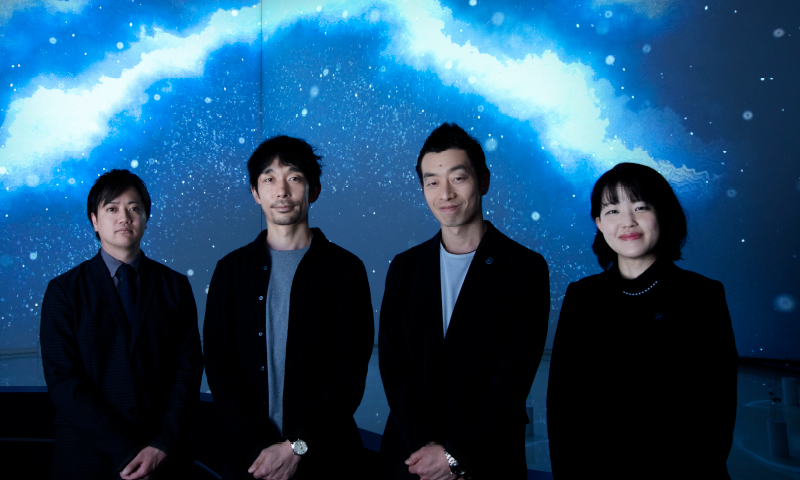
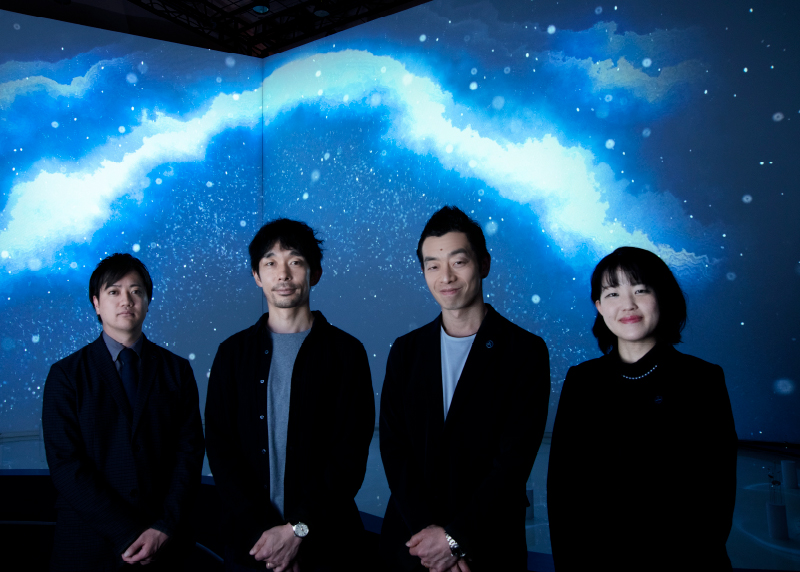
Yoshida: What impressed me most in what they told us was the phrase “sharing of formative experiences.” They try to make their creations to evoke a sense of empathy in the viewers by incorporating scenes and sensations that people have experienced in their childhood or utilizing the phenomena and materials around us. In this case, I think everyone has the experience of playing around by making ripples on the surface of water or pouring sand into a bottle. Because people have such formative experiences, they can understand the installation in a more familiar way, and that’s how this piece was able to touch the hearts of its viewers.
Koriyama: In addition, I was impressed by the word meoki (derived from a resting spot [oki] for the eyes [me]). It is a coined word that indicates something we can keep looking at, such as a fountain or a bonfire. They said that creating artwork that lends itself to meoki is meaningful because in modern society, full of information and products, it provides an impetus for people to pause, take time to reflect on their inner selves, and think about their relationships with products and society. We usually focus on the design of our watches as products. I was really glad, this time, to have the opportunity to directly feel an approach to creation based on a totally different sensibility.
Understanding the feelings in the hearts of the visitors.
Koriyama: Before our visit, I had understood the significance of running an exhibition for the Milan Design Week logically. But after I actually experienced the artwork firsthand and saw the viewers’ reactions, I realized that presenting this work at the festival was indeed something of great significance.
Yoshida: Regarding FLUX’s use of special luminescent liquid to express the passing of time, at the venue I heard someone say, “It’s great that the concept is expressed by creating ripples with real materials instead of just a projected image.” It seems that, in this age where projection mapping is prevalent, an analog approach to visual expression that didn’t make use of such techniques was actually a fresh experience. In fact, it’s precisely because it was an analog work that required great effort, and because the speed of the ripples changed as the viscosity of the luminescent liquid changed over time, it took a lot of work to make fine adjustments at the venue.
Koriyama: I heard a lot of people saying “Are these really parts of a watch?” and “Are watch parts really this beautiful?” As a designer working for a watch manufacturer, I was simply delighted to hear such comments.
Yoshida: I heard those comments, too. I was so proud that people felt the watch parts were beautiful, more than we had imagined.
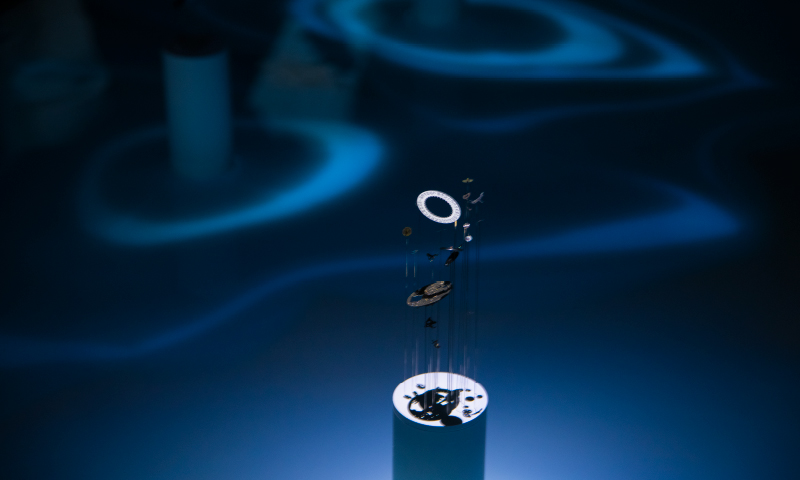
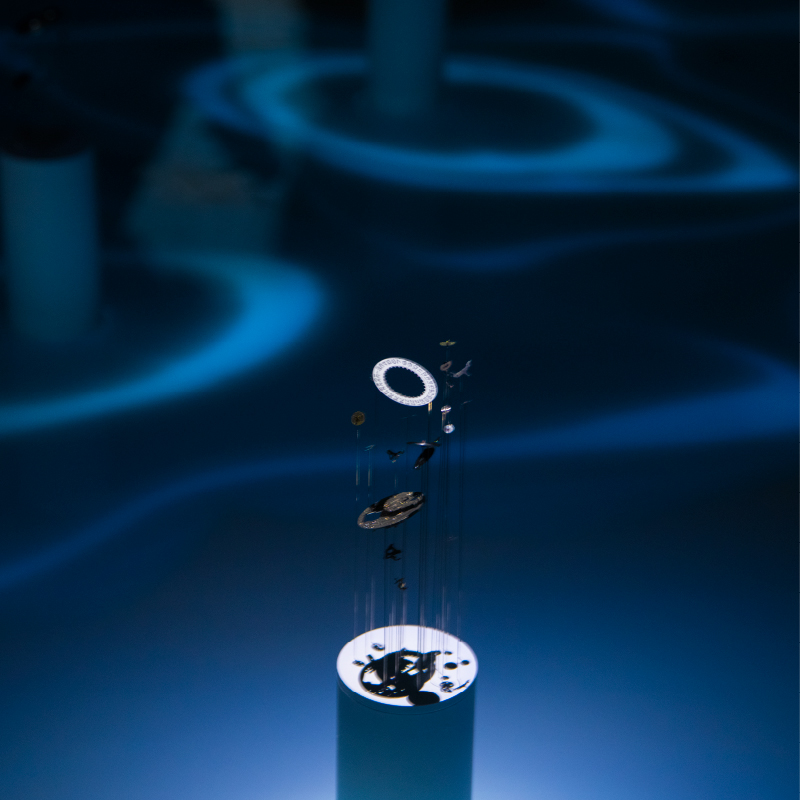
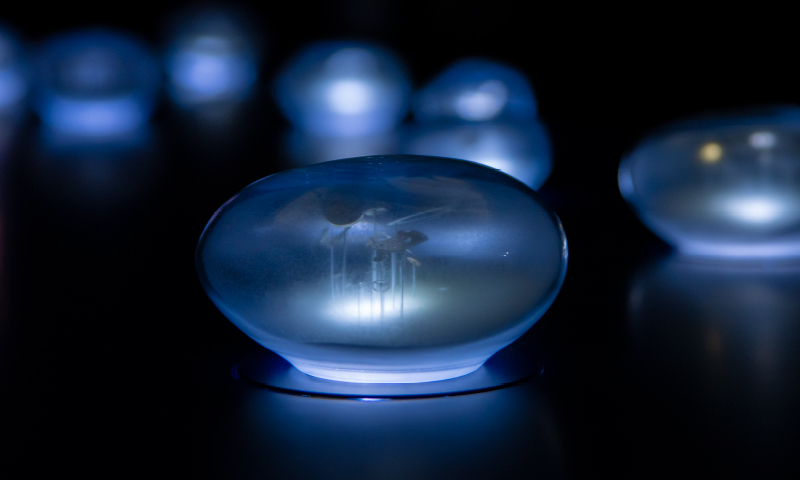
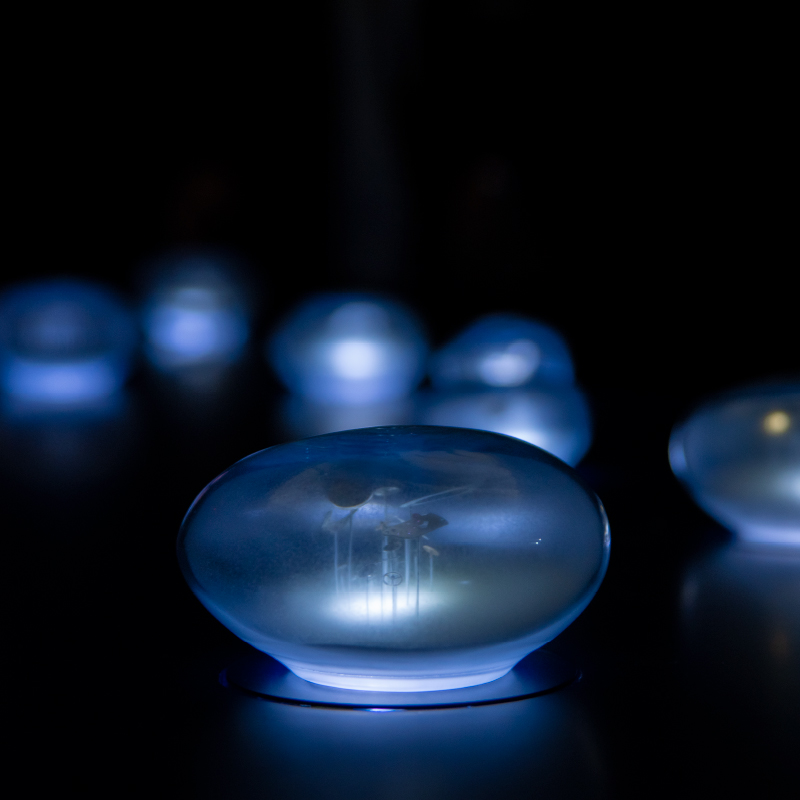
The stimulation received from other exhibitions and thoughts on the future.
Koriyama: Taking time out from attending our Grand Seiko exhibition, we visited exhibitions run by other companies and designers and observed their various artworks as much as possible. They provided us with great stimulation.
Yoshida: Among other companies’ exhibitions, there were so many exhibits that stimulated our sensibility. We felt there were largely two directions among these exhibits. One of them leveraged the companies’ or brands’ proprietary technology to appeal to viewers’ aesthetic sensibilities. The other attracted people with the brands’ world views rather than technology.
Koriyama: That’s right. I feel that the number of exhibitions leveraging proprietary technology to appeal to viewers’ aesthetic sensibilities was relatively high among those exhibits run by Japanese companies. On the other hand, I got the impression that the exhibitions that attracted people with the brands’ world views were mainly hosted by luxury brands such as fashion labels. The Grand Seiko exhibition was more of the latter, taking the approach of attracting people with the brands’ world views.
Yoshida: Among the exhibitions that leveraged proprietary technology to appeal to viewers’ aesthetic sensibilities, the LEXUS installation was very popular and impressive. The lights cast one after another in the dark space created a three-dimensional appearance on the stage, where autonomous robots moved freely in unison with a human dancer’s movement. It had a sense of technology and also stimulated the right side of the brain.
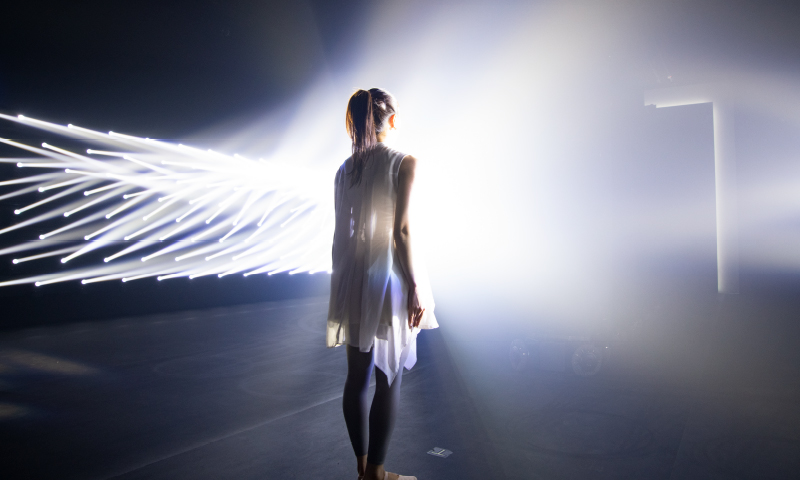
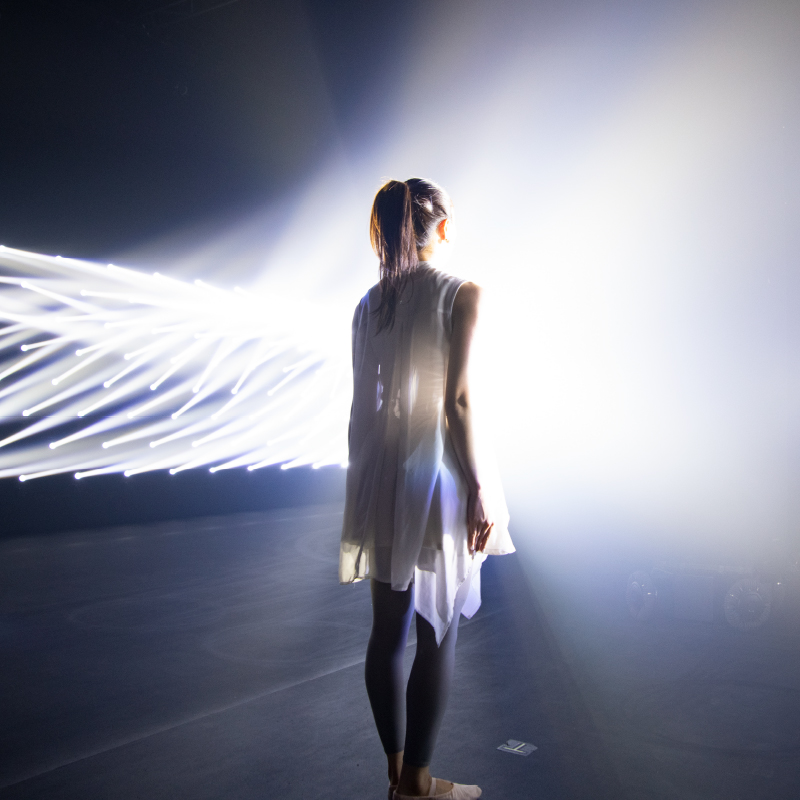
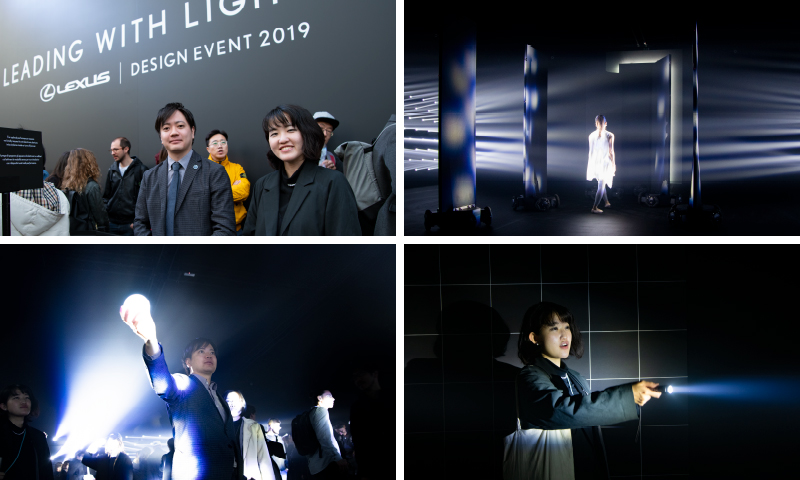
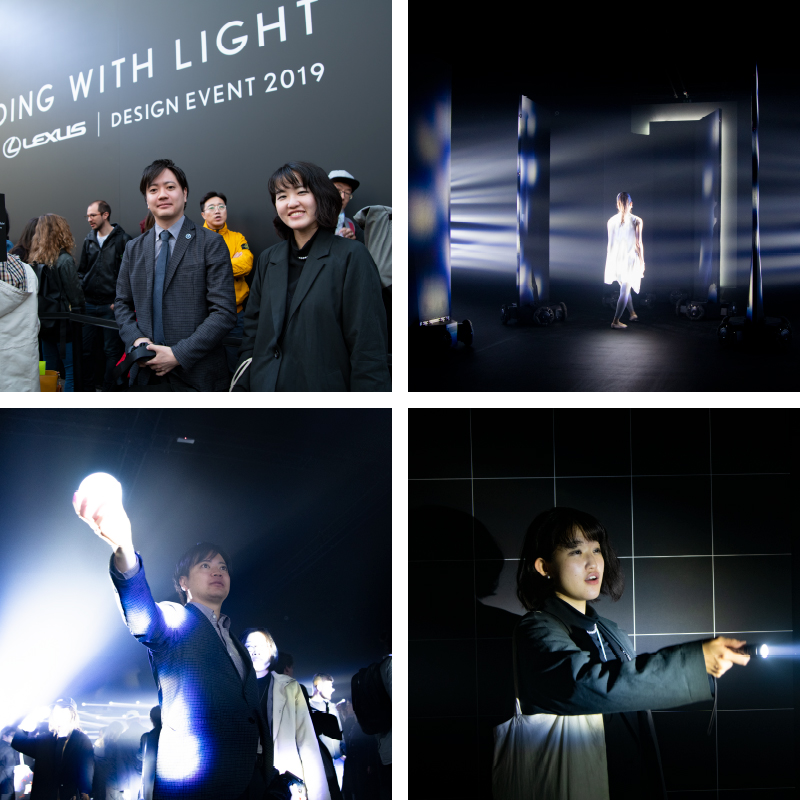
Koriyama: The Sony exhibition consisted of five interactive parts. The viewers could experience the growth of robotics and the change in their relationships with robotics, and I think there were many elements designed to make viewers feel affinity for the pieces. The exhibited entertainment robot “aibo” could express emotions through graphics. I felt that only Sony could utilize technology to appeal to people’s emotional sensibilities with such emotional qualities as adorableness and loveliness.

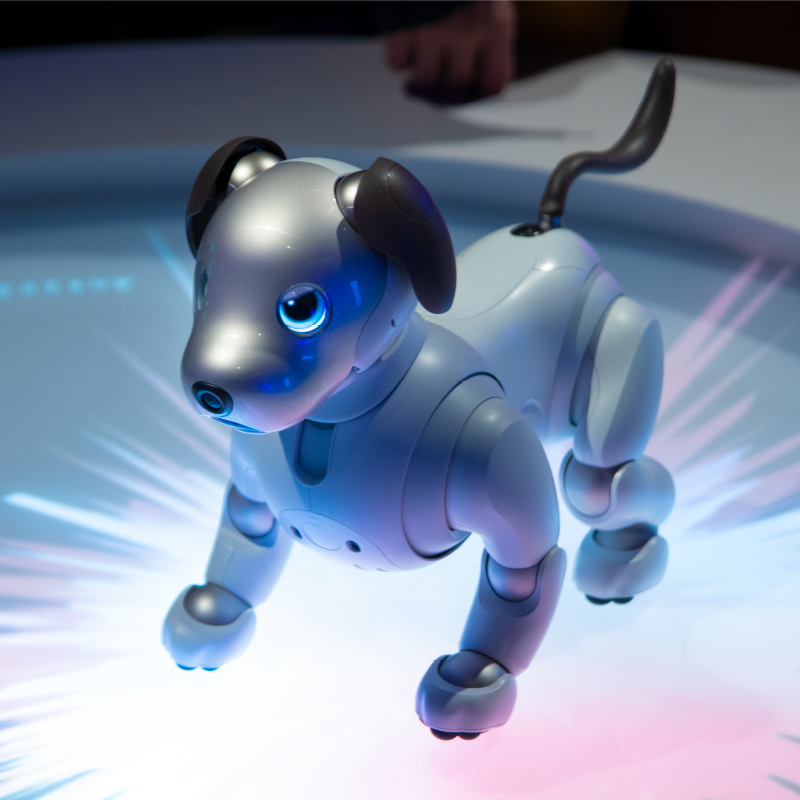
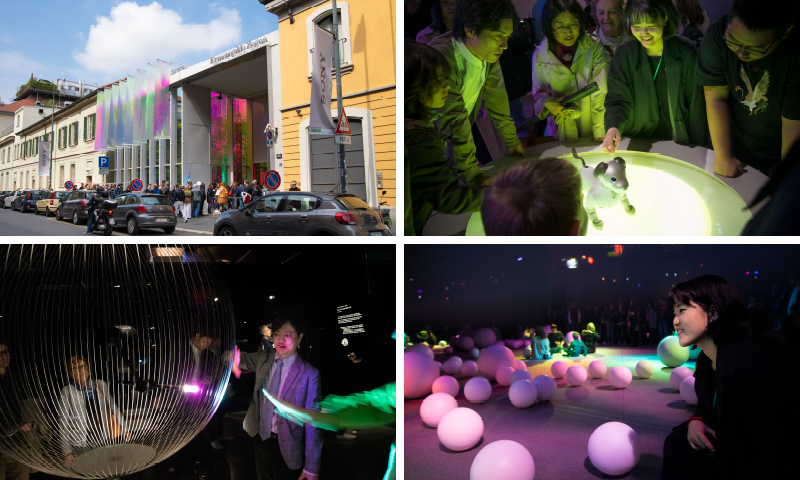
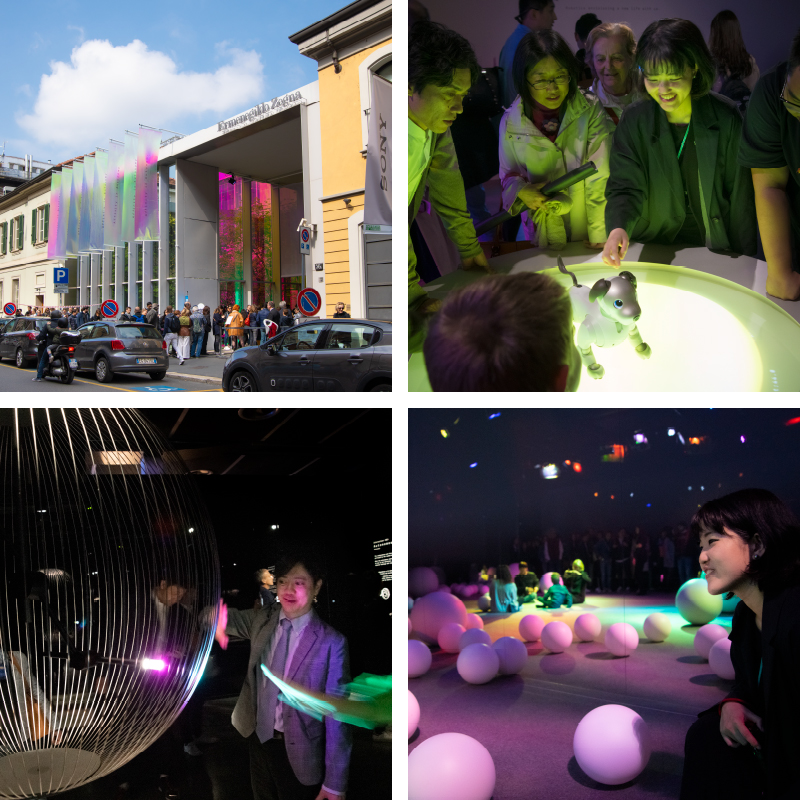
Yoshida: Although it was a different direction from LEXUS or Sony, I was also interested in the exhibition by the door handle manufacturer UNION. This company produces a wide variety of handles using various materials and techniques, and at the exhibition they focused on a primitive casting process called sand casting, which has existed since ancient times. It was highly entertaining to see the process of products being produced right in front of me.
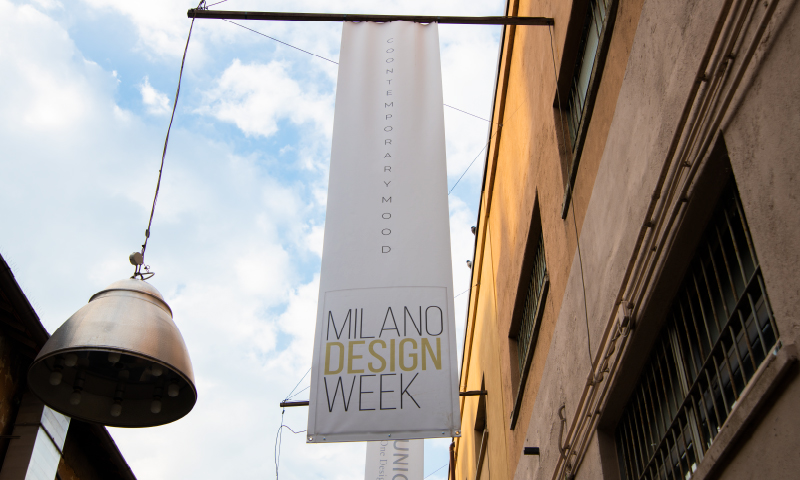
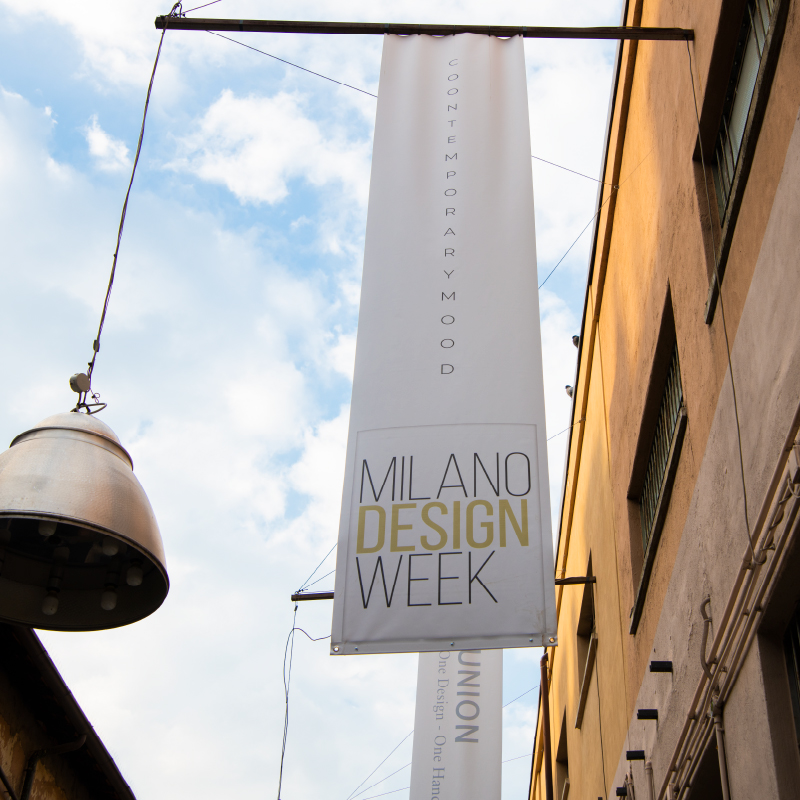
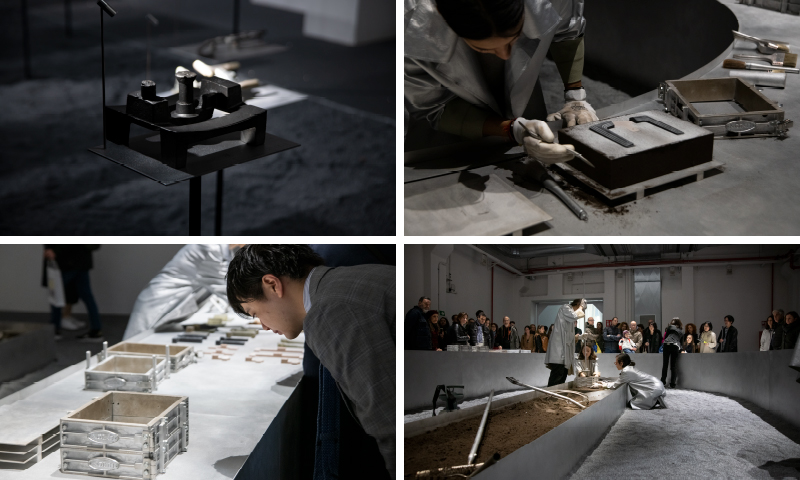
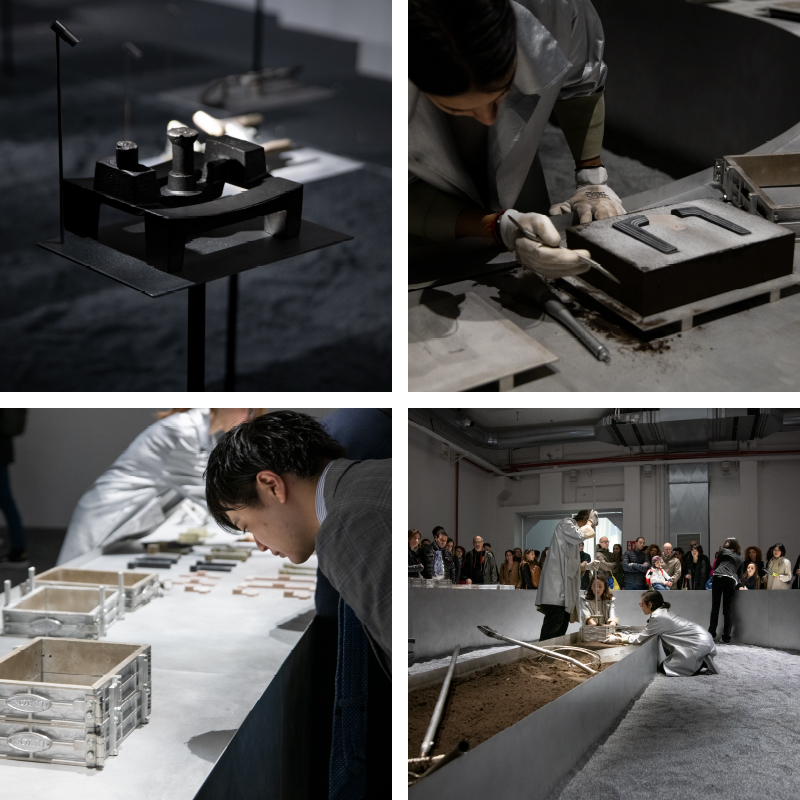
Koriyama: The exhibitions of fashion companies, or so-called Luxury Brands, not only demonstrated the attractiveness of their collections, but also showed thorough attention to their venues and ways of presentation. I strongly felt how much care they had taken to present the value of their brand in the most attractive way possible. Louis Vuitton truly embodied that care and attention, and I was able to enjoy an indulgent time immersing myself in the brand’s world view. I think their exhibition provided many hints on how to present brand value in an appealing way.
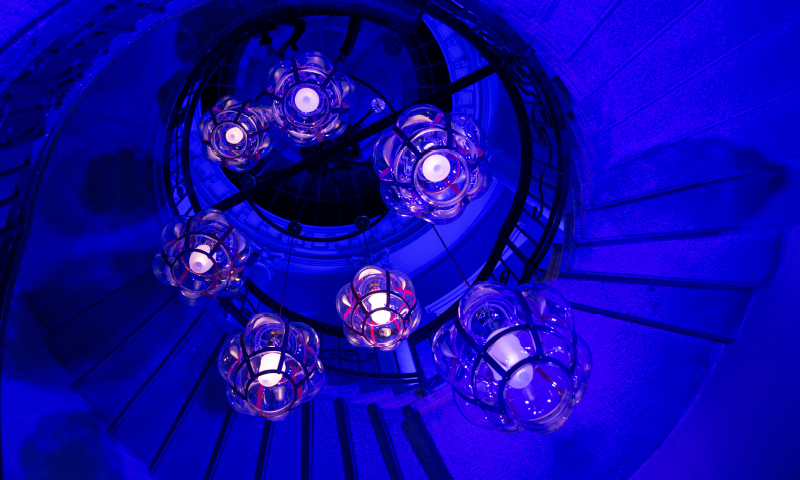
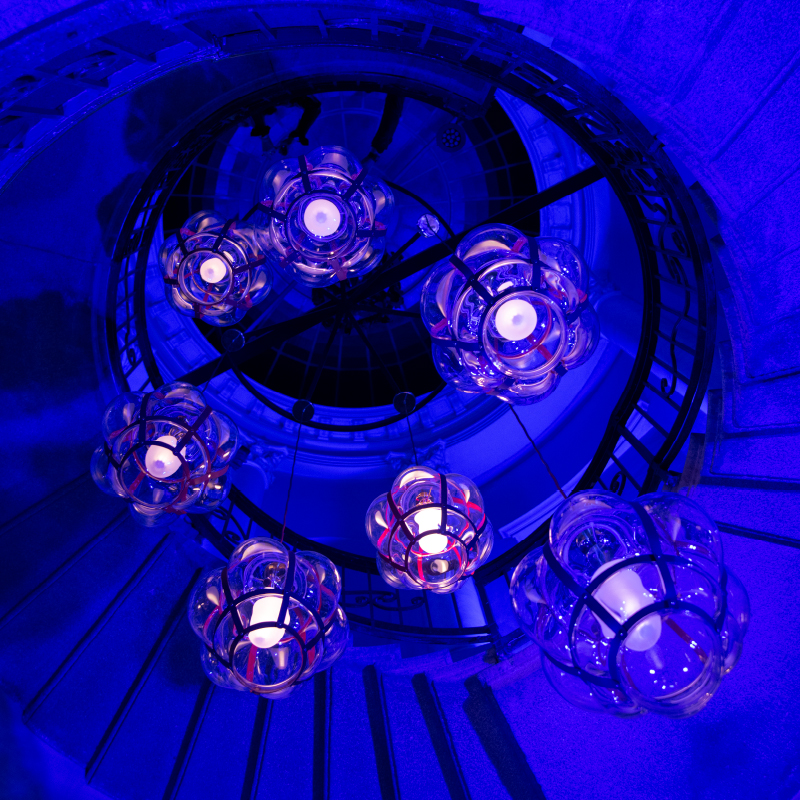
Yoshida: Many of the brands that drew attention during the Week were companies that had participated over many years. And most of their exhibitions had consistent themes. This was Grand Seiko’s second exhibition, and I felt that we need to continue sharing the brand’s value for a long time in order to capture more people’s hearts.
Koriyama: In addition to heightening the attractiveness of the products themselves in terms of their functions and designs, I think it’s going to become even more important to have a perspective on how, to whom, and where we present the appeal of our products, beyond the scope of the Milan Design Week.
Yoshida: Just because we are product designers doesn’t mean that our job is only to think about the shape of a product. Rather, when thinking about designs, it is essential for us to also consider the world views that lie outside the product. A good product that captivates people in the world also means, in short, a product that has good atmosphere.
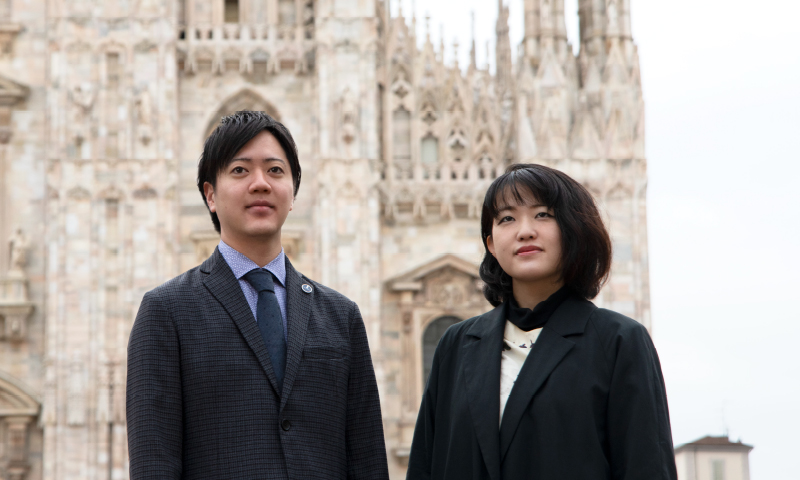
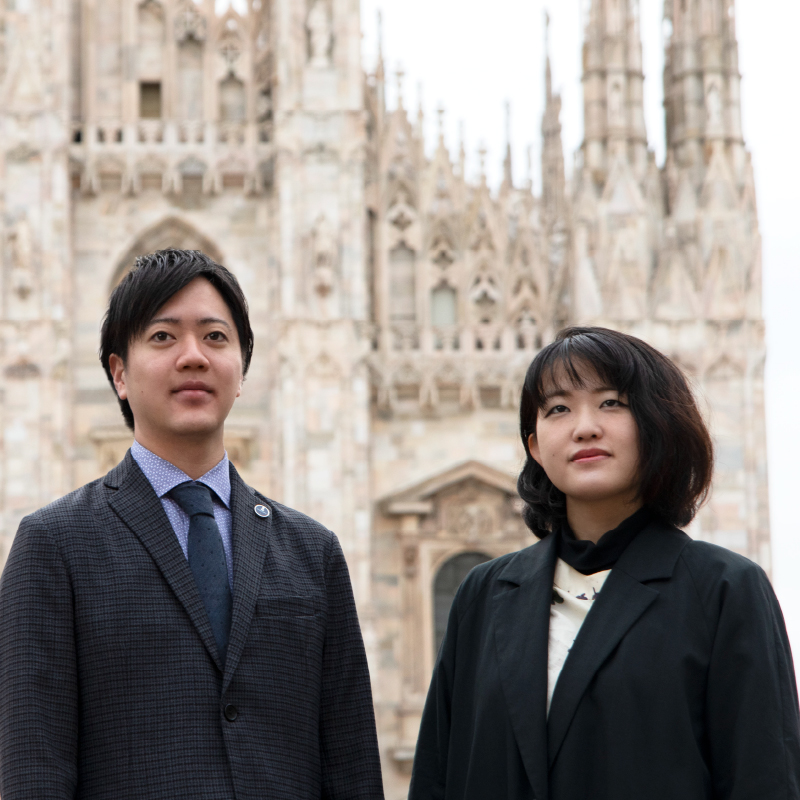
- 1
- 2
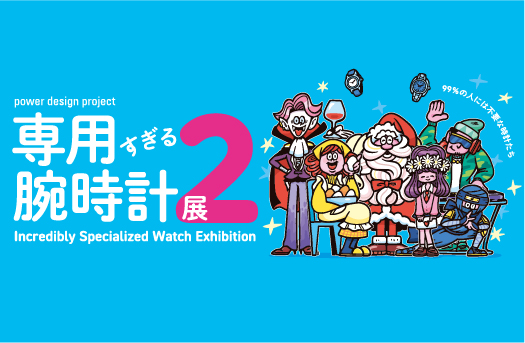
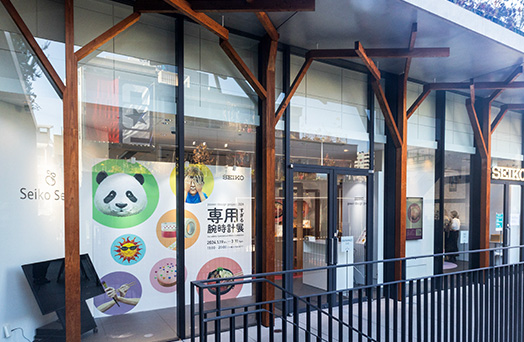
![Vol.19 [Discussion] Where is watch design heading?](https://www.seiko-design.com/wp-content/uploads/2020/01/19-top-newarrival-1.jpg)
